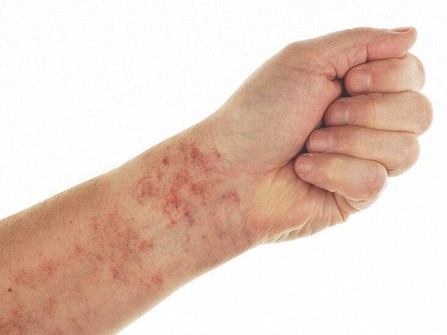A nurse is preparing to perform ocular irrigation for a client following a chemical splash to the eye.
Which of the following actions should the nurse plan to take first?
Place a strip of pH paper onto the cul-de-sac of the affected eye.
Administer proparacaine eye drops into the affected eye.
Install 0.9% sodium chloride solution into the affected eye.
Collect information about the irritant that caused the injury.
The Correct Answer is D
The first action the nurse should take is to collect information about the irritant that caused the injury.
This information is important because it can help determine the appropriate treatment and irrigation solution to use.
Choice A is incorrect because airborne precautions are used to prevent the spread of infectious diseases that are transmitted through the air, and are not necessary in this situation.
Choice B is incorrect because administering proparacaine eye drops into the affected eye is not the first action the nurse should take.
Proparacaine is a topical anesthetic that can be used to numb the eye before performing ocular irrigation, but it is not the first action the nurse should take.
Choice C is incorrect because installing 0.9% sodium chloride solution into the affected eye is not the first action the nurse should take; the nurse should first collect information about the irritant that caused the injury before performing ocular irrigation.
Nursing Test Bank
Naxlex Comprehensive Predictor Exams
Related Questions
Correct Answer is C
Explanation
The nurse should institute bleeding precautions for the client.

Petechiae are small red or purple spots on the skin caused by broken capillaries, which can be a sign of low platelet count (thrombocytopenia) and an increased risk of bleeding.
Bleeding precautions include measures such as using a soft-bristled toothbrush, avoiding injections, and avoiding activities that could result in injury.
Choice A is incorrect because airborne precautions are used to prevent the spread of infectious diseases that are transmitted through the air, and are not necessary in this situation.
Choice B is incorrect because determining the client’s blood type is not necessary in this situation.
Choice D is incorrect because avoiding IV pain medication is not necessary in this situation; however, the nurse should monitor the client for signs of bleeding and bruising.
Correct Answer is C
Explanation

Applying an ice pack can help reduce pain and swelling after total knee arthroplasty.
Placing pillows under the client’s knee (choice A) is not recommended as it can hinder circulation and delay healing.
Performing range-of-motion exercises to the client’s knee (choice B) may be part of the rehabilitation process but should be done under the guidance of a physical therapist and may not be appropriate for immediate pain relief.
Gently massaging the area around the client’s incision (choice D) may not be appropriate as it can cause discomfort and disrupt the healing process.
Whether you are a student looking to ace your exams or a practicing nurse seeking to enhance your expertise , our nursing education contents will empower you with the confidence and competence to make a difference in the lives of patients and become a respected leader in the healthcare field.
Visit Naxlex, invest in your future and unlock endless possibilities with our unparalleled nursing education contents today
Report Wrong Answer on the Current Question
Do you disagree with the answer? If yes, what is your expected answer? Explain.
Kindly be descriptive with the issue you are facing.
